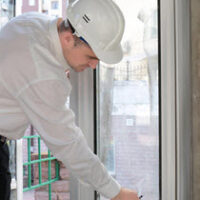Environmental Inspections for Commercial Real Estate

If you intend to buy commercial property, the last thing you want is to become liable for an environmental issue years down the road. Waiting on and paying for an environmental site assessment (ESA) of a piece of property may seem like an inconvenience. However, Phase I ESA is your basic due diligence when it comes to buying commercial property. If you are going to take over ownership of a plot of land, with or without buildings already on it, you need to understand both the benefits and the risks you are acquiring. Once you have title to the commercial property, you become liable for it. If it is contaminated and causing harm to the surrounding environment or people, you could become responsible for correcting the contamination and compensating others for their injuries.
Phase I ESA
During a Phase I ESA, the commercial property is reviewed by a certified inspector. This includes both the land itself and the improvements upon it, like buildings. The inspector conducts the assessment in accordance with Environmental Protection Agency (EPA) and American Society for Testing Materials (ASTM) standards, specifically ASTM Standard E1527-13.
The inspector is looking to see if any part of the land or the improvements may contain contamination. This will include looking for:
- Residue from chemical spills;
- Dead vegetation;
- Above or underground storage tanks for hazardous substances or petroleum products; and
- The use of hazardous substances or petroleum products on the property.
Depending on the assessment provider, inspectors may look for additional environmental issues, including but not limited to:
- Asbestos;
- Lead in water or in paint;
- Mold;
- Radon; and
- Mercury.
In addition to an on-site inspection, the ESA inspector and/or a third-party vendor will review public records regarding the land, examine chain of titles, interview individuals with knowledge of the property’s history, examine historic aerial footage of the land and surrounding area, examine drainage patterns and topography, and more.
Phase II ESA
If a Phase I ESA determines there is a likelihood of contamination at the property, then a Phase II ESA is appropriate. During the second phase of environmental testing, an inspector potentially takes samples of the soil, air, groundwater, and building materials. While a Phase I ESA is standardized, Phase II varies depending on the outcome of the initial assessment. Soil samples may be necessary, while no sign of asbestos, leads, or other contamination in the building materials makes samples of these unnecessary. These samples will be tested based on ASTM Standard E1903 to determine the presence of any hazardous substances or petroleum hydrocarbons.
Phase II is typically more expensive and takes longer than a Phase I ESA. Luckily, it is not always necessary based on the outcome of Phase I. However, if Phase I shows there are concerns with the property. The time and financial investment in a Phase II ESA may be necessary.
Contact Us Today
As your interest in commercial real estate increases, get the information and guidance you need to become a successful landlord or developer. Contact an experienced Florida commercial real estate attorney at the Law Offices of Larry E. Bray, P.A.
Resource:
astm.org/Standards/E1527.htm
